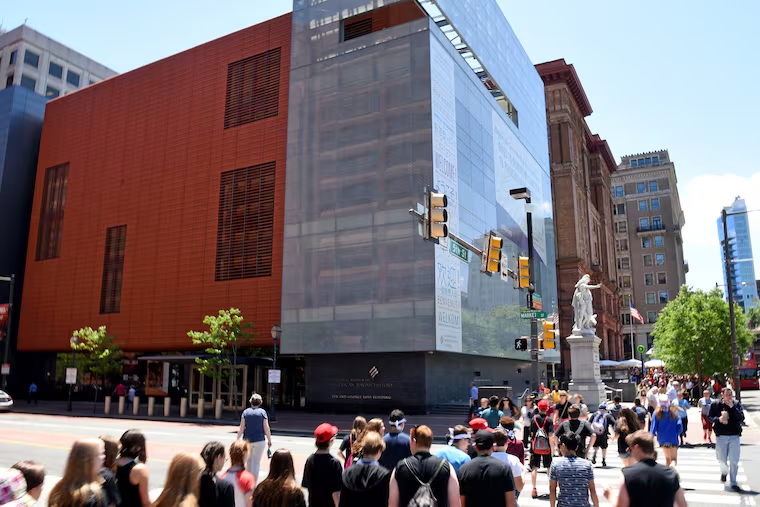Philadelphia’s Jewish Museum is emerging from bankruptcy
The museum on Independence Mall, closed since the start of the pandemic, hopes to re-open this fall.

Philadelphia’s museum devoted to the Jewish experience in America is poised to emerge from bankruptcy.
The National Museum of American Jewish History has received approval from U.S. Bankruptcy Court for a reorganization plan that includes selling its building on Independence Mall to a former board member who will then lease it back to the museum for a nominal fee. Some creditors in the case will receive a portion of their claims, while others have agreed to forgive debt on nearly all they are owed.
Leaders of the museum, which moved to its new home on Independence Mall in 2010, hailed approval of the plan as the start of a new day.
“We are debt-free and have a bright new future,” said Misha Galperin, CEO of the museum.
Chief Judge Magdeline D. Coleman of the U.S. Bankruptcy Court for the Eastern District of Pennsylvania entered her order confirming the plan Thursday.
The museum filed for Chapter 11 protection in March 2020, citing more than $30 million in debt, and closed its doors a few days later as part of the pandemic shutdown. The bankruptcy made the museum ineligible for pandemic-related government funds enjoyed by other cultural groups, and most of the staff was furloughed and eventually laid off.
Leaders hope it can resume exhibitions and reopen to the public sometime this fall.
The majority of the museum’s debt — associated with its unpaid and delayed gifts toward construction more than a decade ago — was held by two groups of creditors: a bank, and about a dozen board members and/or donors in the form of bond debt. As part of the bankruptcy settlement, those dozen or so bondholders — businesspeople and philanthropists like Sidney Kimmel, George and Lyn Ross, Ronald Rubin, and Joseph Zuritsky, or their trusts — agreed to forgive the more than $13 million owed them, ending up only with $100,000 to be split among the group.
Negotiations with Dime Community Bank, owed about $17 million, were “somewhat protracted, but not so much around the amount but about how to get it paid,” said Lawrence G. McMichael, the museum’s bankruptcy lawyer from Dilworth Paxson.
That’s when Mitchell Morgan stepped in, McMichael said. Morgan and his family put up $10 million, which will almost entirely satisfy the debt to Dime Community Bank and gives him ownership of the building. Morgan, founder and CEO of Morgan Properties, a large apartment management and investment firm, will lease the building back to the museum at a greatly reduced price.
McMichael said valuations had determined that fair-market rent for the building would be between $3 million and $3.5 million per year. Morgan will receive $12,000 per year.
“It allows the museum to really flourish without any lease or debt payment burden,” said McMichael. (As part of the deal, the museum will pay Dime Community Bank a total of $360,000 in monthly installments over the course of the year.)
The plan calls for a 42-month lease on the space and allows the museum to buy back the building should it be able to raise the money to do so. The price tag would be $10 million plus an accrued 4% per year. (If a repurchase occurred a year from now, the selling price would be $10.4 million.)
Asked whether a re-purchase was likely, Galperin said: “If I were a betting man I would say yes. But it’s not our first order of business.”
Most immediately, he said, the museum needed to rebuild staff, reopen, and pursue an integration with the Smithsonian Institution. It is currently a Smithsonian-affiliated museum but hopes to become an actual arm of the institution, which would give it a certain amount of government support and make admission free.
In addition to Dime Community Bank and the dozen or so bondholders, a group of 123 smaller creditors originally owed a combined $366,000 will receive just under 14 cents on the dollar, McMichael said.
Even with Thursday’s confirmation of the plan, the museum is still not technically out of bankruptcy. The logistics of signing papers and moving money around to make the plan effective will take a couple of more weeks, McMichael said, with an exit from bankruptcy expected on or around Sept. 15.